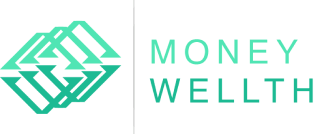By: David Ashley, MD, MBA
We keep hearing about the negative side of increasing interest rates in the news. It now costs more to borrow money for homes, cars, education, and other items requiring a loan.
There is, however, a positive side to all of this. For the first time in over ten years, you can get some of the highest returns on High-Yield savings accounts, Treasury Bills (T-Bills), bonds from the U.S. Treasury, and Certificates of Deposit (CDs). CDs and U.S. treasuries are generally safer investments than stocks, and earning additional interest on your savings is always a positive.
Banks sell CDs to encourage savers to keep money at the banks, allowing the banks to hold reserves that they can then loan out against. The money is locked in for a period of time, usually one to five years, and can only be withdrawn early by paying a penalty. Usually, the longer the term on the bond, the higher the interest rate the bank pays. A person who buys a long-term bond takes more risks by locking money in for a longer time, so that person normally gets paid more for doing this. As with all bank deposits, CDs are covered by FDIC insurance. All of a person’s accounts in a single bank, including CDs, are protected up to a value of $250,000 for all of that person’s accounts combined.
Treasuries are another safe place to put your money presently. Right now, shorter-term treasury bills (four weeks to 52 weeks) are paying a higher rate than longer-term bonds (twenty years to thirty years). This is unusual and is known as an “inverted yield curve.” Longer-term treasuries (ten-year notes), for example, are currently yielding less than one-year treasuries. When yield curves invert, that is often a sign that the economy is slowing and can indicate that a recession may be coming in the next year or so.
The risk with a longer-term bond is that if a person has to cash the treasury in before the term is finished and if interest rates have gone up, then the value that person would get for the treasury is less. That is a risk to the holder of the long-term bond. This was one of the scenarios recently at Silicon Valley Bank. There was a run on the bank; the bank had to cash in longer-term treasury bonds purchased when interest rates were half of what they are now. The bank lost money due to the reduced value of the bonds and could not cover the unexpected bank withdrawals. Bank regulators then shut down Silicon Valley Bank.
In the current environment, the investor who wants to play it safe would get the best rate on treasuries by buying short-term bills and holding them for the whole term. As of March 31, 2023, these bills are paying slightly over 4.5%.
Even bank savings accounts, particularly High-Yield savings accounts, offer high-interest rates for keeping your money in them. Some banks are offering as high as 4% or more on High-Yield savings accounts.
Inflation is running high and squeezing most of us. If you have any extra money to put away each month, make sure you gain as high a return on your savings as possible to help fight inflation. Treasuries are a safe investment, and High-Yield savings accounts are an easy option. The stock market has been performing poorly over the last 15 months. If a recession is on the way, the market may remain volatile. A person could safely invest in Treasuries or CDs, taking advantage of the higher interest rates.
Consider parking some money in Bank CDs and Treasury Bills, as long as you won’t need it during the term of the Treasury or CD. It is a safe investment and will currently earn more interest than keeping your money in a traditional savings or checking account. If you think you will need continual access to your money just in case, consider a High-Yield savings account. Right now, High-Yield savings accounts are offering returns as high as most CDs and Treasury Bills.

